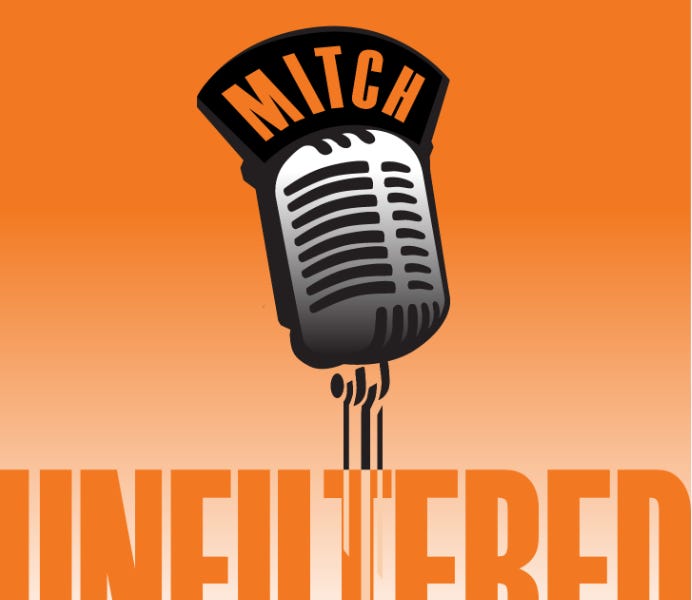- The Dang Apostrophe
- Posts
- 🤝 Let's make a deal 🤝
🤝 Let's make a deal 🤝
The Seahawks GM is once again wheeling and dealing, and I believe that willingness to make mid-season trades is an essential -- and surprising -- component to Seattle's success.
Trader John struck again this week, the Seahawks general manager acquiring linebacker Ernest Jones IV in a deal with Tennessee.
It was the second in-season move John Schneider made to improve the run defense, coming a few weeks after he’d given up a 2026 6th-round pick to acquire Roy Robertson-Harris from Jacksonville.
It’s the sixth trade that Seattle has made since the start of training camp, continuing what is the single biggest shift in organization M.O. under Schneider’s watch.
Dude likes to deal. He has ever since he arrived in 2010 and racked up more than 200 transactions in that first as Pete Carroll’s GM.
Now some of that was because Schneider was reshaping the roster. Some of that was because he is not just willing, but aggressive in making deals mid-stream.
From my view, this is both surprising and encouraging. I’ll explain more when we go deep. But first …
📖 Quick read 📖
I have grown weary of how much of the discussion of college football involves finances.
I know more than I need to about the broadcast contracts of the various conferences. When a coach mentions NIL, I immediately understand that he’s talking about player compensation and not an obscure directional university in the Midwest nor an obscure federal bureaucracy.
I am especially tired of how constantly the school I attended and root quite vigorously fore is mentioning its need for money. I wrote about that this week in the Tacoma News Tribune because I’m beginning to feel like the mark who’s sitting in front of a carnival game at the midway aiming a water pistol into the mouth of a clown, inflating a balloon as a gravelly voiced barker urges me to keep pouring my money into this game if I’m serious about winning a big prize.
🎤 Hear me, hear me 🎤
🤿 Going Deep 🤿
In the 15 seasons that John Schneider has been Seattle’s general manager, the team has made 46 trades between the start of training camp and the trade deadline.
In the 15 seasons before Schneider arrived, the franchise made 14 in-season trades.
Some of this reflects a change across the league. NFL teams — in general — make more trades. That fact is laid out in Ivy League research with this paper from Dartmouth Sports Analytics, which found that teams made an average of 9.3 trades in the 10 seasons from 2014 through 2023 compared to just 4.2 in the 10 seasons from 1984 through 1993.
Now, those averages include deals around the NFL draft, which is typically when most trades occur. In fact, that’s when the most transactions occur.
The second busiest period is when teams trim their rosters down to 53 players, but most of those deals involve players on the lower rungs of the depth chart.
What is most striking to me about Schneider is the frequency with which he’s added significant players at a point when most teams shy away from making substantial changes.
Marshawn Lynch, Duane Brown, Qandre Diggs and Leonard Williams were all acquired midseason. Sheldon Richardson and Jadaveon Clowney were both acquired during training camp.
Some of those deals worked out better than others. Each showed two things:
Schneider was aggressively looking for players who could provide an immediate upgrade.
He was willing to part with significant draft capital to do so.
That last part surprised me. You see, when Schneider took over as GM, I thought the Seahawks would become a team that relied upon the draft to provide a consistent flow of cost-controlled labor. I thought they’d be like the Tampa Bay Rays of the NFL.
Now some of this was because of how exceptionally well Seattle drafted in those first three years that Schneider was the GM.
Some of that was because — in the wake of Jimmy Johnson’s fleecing of the Minnesota Vikings in the Herschel Walker trade — NFL teams in general had become much more aware of how valuable draft picks are.
Not only was it the ticket to younger talent, but in an era of free agency, that younger talent was significantly cheaper than the veterans.
Yet over Schneider’s tenure he has shown both a desire to retain increasingly expensive veterans and to give up draft picks to acquire other team’s expensive veterans.
That was true in the offseason deals for receiver Percy Harvin and tight end Jimmy Graham. It was certainly true when Seattle traded a second-round pick to acquire Leonard Williams last season.
The price to acquire Jones from Tennessee wasn’t so steep as Seattle gave up a 2025 fourth-round pick and linebacker Jerome Baker, whom Jones will presumably replace.
Now, it’s worth noting that the price Seattle paid to acquire Jones was higher than what Tennessee gave up to get him from the Rams back in August. The Titans had to add him for a swap of late-round picks in 2026. I’m just going to assume that was because the Rams wouldn’t have been willing Jones within the division.
The second thing to note is that Jones is going to be a free agent after this season. Essentially, Seattle is giving up a fourth-round pick for what might wind up being a rental for two-thirds of the season.
However, Schneider hasn’t been shy about that, either. He doesn’t mind viewing that half season as a test drive to see if the player he’s acquiring is someone the team wants to make a long-term investment in.
In the case of Leonard Williams last year, the Seahawks liked what they had and re-signed him. In the case of Sheldon Richardson back in 2017, the Seahawks let him walk as a free agent after the season.
In both cases, Schneider showed not just a willingness, but an interest in making in-season additions that he thought would help the team. He hasn’t always been right about that, but overall, Seattle is certainly better off because of those moves. Now we’ll just have to wait and see if that’s again the case this season.


Reply